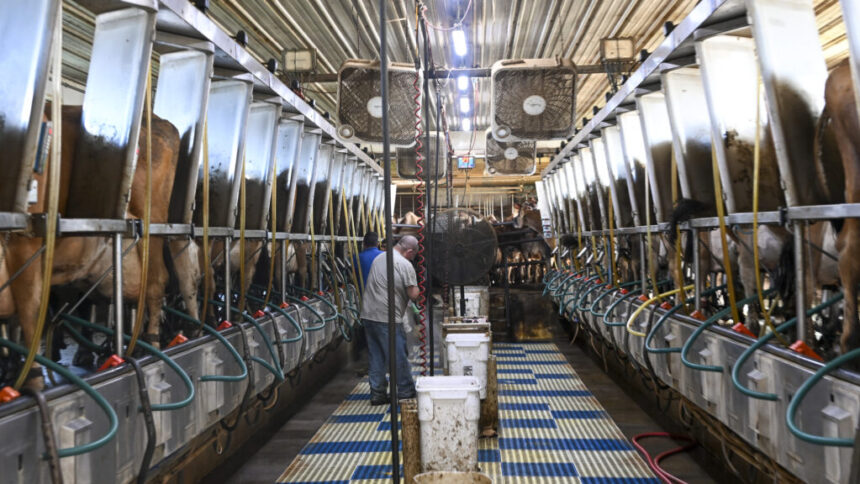The outbreak of H5N1 bird flu in U.S. dairy cattle has raised concerns about potential human infections that may be going undetected. Farmworkers, who face intense exposure to the virus, have been limited in their access to testing due to resistance from farmers and a lack of health insurance and paid sick leave in the industry. However, recent blood testing conducted by the Centers for Disease Control and Prevention (CDC) has started to shed light on the situation.
The CDC’s findings, published recently, revealed that out of 115 farm workers tested in Michigan and Colorado, eight individuals showed evidence of a recent H5N1 infection. Half of these individuals recalled being ill around the same time the cows were sick, while the other half did not remember experiencing any symptoms. These serological surveys, which detect antibodies in the blood, help scientists understand the spread of the virus.
While the new results indicate that there may be cases of H5N1 going unnoticed, there is no evidence that the virus has gained the ability to spread from person to person. The CDC reassured the public that the virus continues to pose a low risk. However, the agency is now recommending that all farm workers exposed to infected animals be tested for H5N1, regardless of whether they show symptoms.
The CDC’s study found that all eight individuals with H5N1 antibodies had reported cleaning milking parlors and most had been involved in milking cows without proper respiratory or eye protection. This highlights the importance of implementing measures to prevent further spread of the virus. The CDC is now recommending the use of Tamiflu for individuals with high-risk exposures to infected animals.
Despite these recommendations, challenges remain in curbing the outbreak. Farmers have been hesitant to allow testing on their premises, and environmental conditions may make personal protective equipment difficult to use. Additionally, accessing medical care and getting prescriptions filled in a timely manner may be difficult for farm workers in remote areas.
States like Michigan and Colorado have been successful in collaborating with the CDC to conduct studies, but others, like California, have not yet indicated whether they will be conducting similar serological work. The CDC is continuing its efforts to understand the extent of unnoticed infections among individuals working closely with cows.
In conclusion, while the H5N1 outbreak in U.S. dairy cattle is concerning, public health authorities are working diligently to identify and treat cases to prevent further spread of the virus. Collaboration between government agencies and farmers is crucial in mitigating the impact of the outbreak and protecting both farm workers and the general public.






